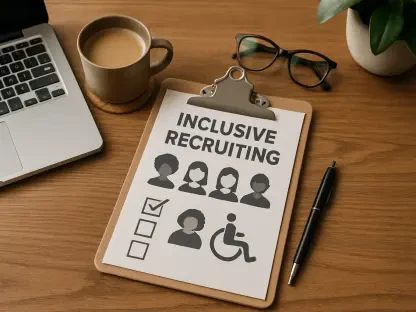Today, we’re sitting down with Sofia Khaira, a renowned specialist in diversity, equity, and inclusion, who has dedicated her career to transforming workplace environments through innovative HR practices. With her extensive background in navigating complex employment law issues, Sofia offers a unique perspective on the recent legal challenges faced by the U.S. Equal Employment Opportunity Commission (EEOC) in the case of a former Amazon driver. In this interview, we’ll explore the nuances of disparate-impact discrimination lawsuits, the EEOC’s legal defenses, and the broader implications of executive influence on civil rights enforcement.
Can you walk us through the core issue in the lawsuit filed by the former Amazon driver against the EEOC?
Absolutely. The lawsuit, known as Cross v. EEOC, centers on a former Amazon driver’s claim that the EEOC has been improperly handling disparate-impact discrimination charges. The plaintiff alleges that the agency essentially adopted a practice of administratively closing these types of cases without proper investigation or action. This kind of discrimination focuses on policies that, while seemingly neutral, disproportionately harm a protected group. The driver felt the EEOC failed in its duty to address her concerns about a specific workplace policy at Amazon.
How did the EEOC respond to the accusation that they’ve been closing disparate-impact charges without due process?
The EEOC pushed back strongly, arguing that they did investigate the plaintiff’s specific complaint. They issued her a right-to-sue notice, which essentially allows the individual to take their case to court if the agency decides not to pursue it. The EEOC’s position is that they fulfilled their obligation by reviewing the case, even if they didn’t move forward with enforcement action on her behalf.
What’s behind the EEOC’s argument that the plaintiff lacks standing to challenge their decision?
The EEOC’s stance on standing is rooted in the idea that the plaintiff doesn’t have a concrete legal injury to sue over. They argue that since they investigated her complaint and provided her with the option to pursue her case independently through a right-to-sue notice, she hasn’t suffered a harm that gives her the right to challenge their broader enforcement decisions in court. It’s a procedural defense to limit judicial oversight of their internal processes.
Can you explain how the EEOC defended their actions under the Administrative Procedure Act in this case?
Certainly. The EEOC argued that their decision not to pursue the disparate-impact charges doesn’t qualify as a “final agency action” under the Administrative Procedure Act, which is typically required for judicial review. They emphasized that their enforcement choices are discretionary, meaning they have the authority to decide which cases to prioritize. They also asserted that nothing they did violated any laws or statutes, so there’s no basis for the court to step in.
The EEOC described their handling of discrimination charges as a ‘core executive function.’ What does that mean in the context of this lawsuit?
When the EEOC refers to their work as a core executive function, they’re saying that investigating and deciding on discrimination charges falls squarely within the powers of the executive branch of government. They believe this shields their decisions from being second-guessed by courts, as it’s a fundamental part of their role to enforce federal laws like Title VII. They’ve used a similar argument in other cases, like those involving transgender discrimination, to stress that their investigative discretion shouldn’t be subject to judicial interference.
How did the EEOC address the idea of completely stopping enforcement of certain laws, and how does that relate to this case?
The EEOC brought up a hypothetical scenario where they might entirely cease enforcing relevant anti-discrimination laws, suggesting that only in such an extreme case might there be grounds for a legal challenge. But they countered that this isn’t the situation here. They pointed out that they did investigate the plaintiff’s claim fully, showing that they’re still actively enforcing the law, just not in the way the plaintiff wanted.
What was the specific nature of the discrimination complaint the plaintiff originally filed against Amazon?
The plaintiff’s original complaint against Amazon focused on a workplace policy that she believed had a disparate impact based on sex. While the details of the policy aren’t fully public, the core issue was that it disproportionately affected one gender over another, even if that wasn’t the explicit intent. This type of claim relies on showing statistical disparities and arguing that the policy unfairly disadvantages a protected group.
How does the recent executive order from President Trump factor into the EEOC’s approach to disparate-impact cases?
President Trump’s executive order from April directed the EEOC leadership to reassess their approach to pending investigations and civil suits involving disparate-impact liability. The order criticized this legal theory as inconsistent with constitutional principles and equality of opportunity. It’s created a backdrop of political pressure on the EEOC to potentially scale back on these types of cases, which some argue could influence how the agency prioritizes its enforcement efforts, even if they deny a formal policy shift.
What’s your forecast for the future of disparate-impact litigation and EEOC enforcement in light of these developments?
I think we’re at a crossroads for disparate-impact litigation. On one hand, the legal theory is well-established, backed by Supreme Court precedent and codified in amendments to Title VII. On the other, political directives like the recent executive order could lead to a chilling effect on enforcement, with the EEOC potentially becoming more selective about which cases to pursue. I foresee ongoing tension between the agency’s stated discretion and public or judicial pressure to address systemic discrimination. The outcome of cases like Cross v. EEOC could set important precedents for how much oversight courts will exert over the EEOC’s decisions in the coming years.









